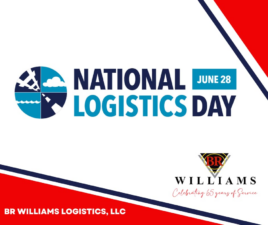
According to a Fortune Magazine report, truck accidents have resulted in around 4,000 traffic deaths per year during the past several years. The Federal Motor Carrier Association (FMCA) reports the costs for injury-related truck accidents average about $198,250, while fatality-related accidents cost over $3.5 million per incident. One truck accident settlement came in at $34 million, according to the 2012 report.
These astronomical costs are causing management of trucking firms and insurance companies to seek ways to reduce the likelihood of trucking accidents and, when they do occur, to be able to document the precise circumstances surrounding the situation. Many feel that the truckers are frequently blamed for accidents for which they had no responsibility.
However, without documented proof, the more massive vehicle tends to receive the bulk of the blame for accidents.
Therefore, the best trucking companies are attempting to take affirmative steps to mitigate these problems. The objectives are:
- Reduce and prevent the number of truck accidents
- Keep their drivers and equipment safe
- Be able to identify the contributing causes for any accident
Generating Conclusive Proof of Cause in a Truck Accident
Truck collisions, particularly at high speeds, are sometimes difficult to assign blame. While passenger vehicles frequently are heavily damaged in a crash with a tractor-trailer, this does not mean that the truck driver was at fault. Sometimes several of plausible scenarios might explain the accident, particularly as high-speed momentum send vehicles and parts flying in different directions. Witnesses may have seen the accident occurring, but the initial cause might not have been determinable.
One solution adopted by some of the best trucking companies to review all elements of an accident is to install onboard cameras. The rationale is that recording the events that led up to, during, and after a crash would be helpful in assigning a cause.
Employing cameras has been an essential part of law enforcement in recent years as well as surveillance of commercial establishments to monitor theft and robberies. In many cities and states, police officers carry body-mounted cameras to review activities and conversations during an arrest. This process introduces the element of reality to any situation and reduces confusion about how events occurred.
Onboard Cameras for Trucks
Outward-Directed Cameras
The first initiative to adding a camera to trucks has been to install outward-directed cameras that record precisely what the trucker sees. The rationale is that the recording will identify driving irregularities by passenger vehicles and other trucks that might be the cause of an accident. Of course, the record can also recognize the degree of fault on the part of the company’s driver, a determination that may still reduce the amount of time and legal costs to sort out the situation.
Some versions include side-mounted cameras to record activity that may be occurring along the side of the truck or behind the driver. There have been instances of trucks being bumped off course by passing vehicles thereby causing a loss of control and severe accident.
Inward-Directed Cameras
The best trucking companies, like BR Williams of Oxford, Ala., are adding or planning to add inward-facing cameras to record the conditions within the truck cab. Many truck drivers object to this type of scrutiny believing that this to be an invasion of their private domain. Others see this as a way to avoid unintended liability for an accident and another tool to ensure their personal safety.
Inward facing cameras are named Driver Risk Management Systems or DRMS. These are intended to capture the driver’s condition or behavior at any time and are designed to be deterrents to unacceptable behavior while driving. These systems can also include sound recorders, real-time GPS tracking, and sensors that record the traveling speeds, near-miss collisions, and even fuel-wasting actions.

An article in truckersreport.com recognizes the value of outward-facing cameras but voices many driver objections to the additional scrutiny of monitoring driver activities within the cab.
Some versions of DRMS will monitor when a driver may be falling asleep, talking on the phone, texting, eating, and other behaviors that can affect the driver’s concentration. Other DRMS record on a short loop that is continuously deleted and recorded over, unless in the case of an accident when the DRMS will save the last looped recording.
Operationally, systems can record events such as hard braking, dangerous turning, speeding, and other accident-causing behaviors.
The Truckers Report notes that the devices at this time do not watch the driver “live”, but are merely recordings that may be reviewed in case of accident or other reasonable cause.
Success of the Best Trucking Companies Camera Initiatives
While the precise intent of onboard camera installations is to be a money-saving initiative resulting from reducing risk and insurance costs, the real objective is meant to be a safer environment for the drivers and the equipment. One trucking concern reported that the savings from using the onboard cameras were estimated at $10 million in the first year based on reductions in vehicle damage and litigation.
The best trucking companies, including BR Williams, are moving forward with these life-saving devices. As the programs progress, many feel the objections will fade away as fewer instances of truck-related accidents occur.
About BR Williams Trucking & Logistics
BR Williams, a family-owned Trucking, Warehousing, Fulfillment & Logistics Company has been serving customers since 1958. We specialize in removing the supply chain frustrations our customers have by developing custom-made solutions. We offer nationwide transportation services through our fleet and logistics division. Our multiple fulfillment and distribution warehouses in Alabama span over 1.7 million square feet. Our core values are HONESTY, INTEGRITY, SERVICE. We still serve our first customer that was established in 1958.
To discuss your supply chain needs, please contact us online or call (800) 523-7963



